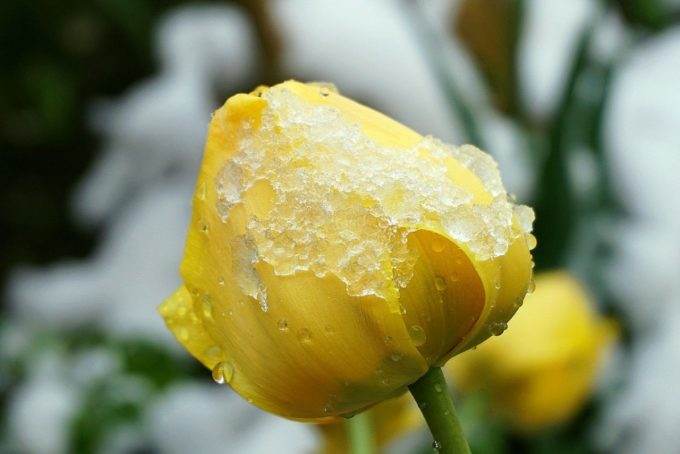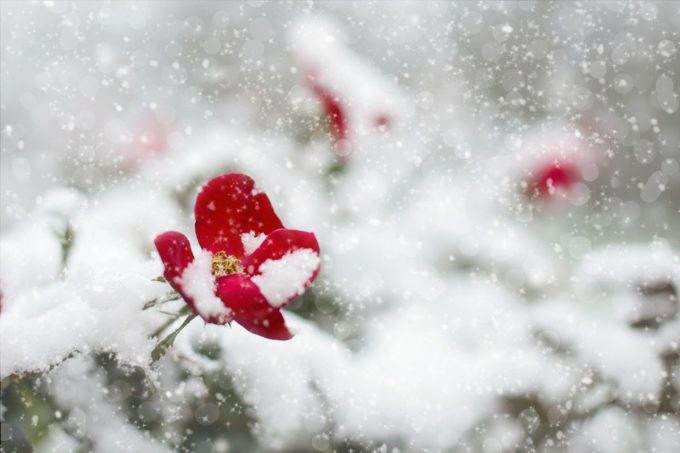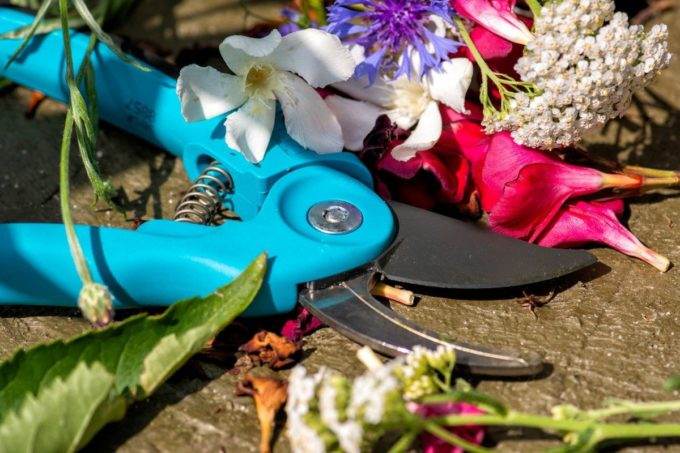Every experienced gardener knows that taking care of plants is a year-long commitment. Just planting and occasionally watering them is not enough to expect a successful harvest at the end of the season. There are so many other tasks that have to be done during the year.
 However, if you are a novice gardener, you might not be aware of all these steps you have to take in order to protect your plants. To assist you in this endeavour, we made a list of eight landscaping interventions you should do on time to help your garden survive the winter. Take a look.
However, if you are a novice gardener, you might not be aware of all these steps you have to take in order to protect your plants. To assist you in this endeavour, we made a list of eight landscaping interventions you should do on time to help your garden survive the winter. Take a look.
1. Choose plants that fit your area
The first step toward ensuring your plants survive the winter is choosing the right plants. You might be tempted to purchase and plant something that is not native to your area but that only means that it is not best suited to the conditions of your garden.
Instead, you should opt for plants that will not be affected by the harsh winter if you live in such a climate. Moreover, you can also choose some cool-season annuals that will allow you to extend your display of plants as they prefer cooler temperatures to grow and bloom.
2. Protect your plants
When it comes to protecting your plants, you have many options. For example, you can use a frost net cover as it allows some sun, wind, and water through but it will protect your plants from frost. It can be used in cold climates as well as in warmer ones that experience random frosts. If your annuals include kale and cabbage, this is a great solution.
You can also use cardboard boxes and plastic bags to shield small plants from bad weather. Then, young and delicate plants can be protected from the wind by creating a burlap barrier around them. Finally, by planting early-blooming trees in the north-facing part of your yard, you can minimize frost damage as they will be able to thaw gradually.
 3. Remember to dig up tender bulbs
3. Remember to dig up tender bulbs
While fall is the right time to plant bulbs that bloom in the spring, you have to remember that some tender bulbs cannot survive in frozen ground. This is why you have to dig them up. So, if you have summer-bloomers like dahlias and gladiolus, dig them up once their leaves turn brown. Cut the leaves, brush off excess soil, and after they’ve been dried for a week, store them in a breathable container. That way, you will save them for another year.
4. Watering is still necessary
If you have evergreens, don’t forget to water them adequately as they can suffer during the winter. You need to ensure they get enough water before the ground freezes as then they will not be susceptible to winter burn and death.
Of course, you should check up on all your plants and if the ground is not completely frozen, make sure to water them as well. Having a hose reel or a sprinkler system will make this easy. Pro-tip: Water delicate plants on cold nights because as the water freezes, it releases heat that will protect the plants.
5. Add plenty of mulch
If you’ve chosen the right perennials for your area, you will not have to do a lot to prepare them for winter. However, if you are in a region that experiences plenty of freezing and thawing, you will want to prevent it from causing damage to the roots by adding a thick layer of mulch around the plants once the ground has frozen. This will maintain an even temperature and protect the plants. You can use a straw, shredded bark, and finely chopped leaves for mulch.
6. Know when to prune
 It is essential to prune your plants at the right time. Even though pruning when it’s not the time might not kill the plant, it can damage it. For example, pruning a spring-flowering shrub during winter means that it won’t bloom in spring. Keep to the rule of thumb that says to prune spring-flowering plants right after they flower and those that bloom in summer in the spring.
It is essential to prune your plants at the right time. Even though pruning when it’s not the time might not kill the plant, it can damage it. For example, pruning a spring-flowering shrub during winter means that it won’t bloom in spring. Keep to the rule of thumb that says to prune spring-flowering plants right after they flower and those that bloom in summer in the spring.
Moreover, remember not to prune during hard frosts as you don’t want to put your plants through a shock. However, you do have to trim any broken, damaged, or diseased limbs on time so that the snow and wind don’t make this problem even worse.
7. Don’t forget to rake
While finely chopped leaves can be used as mulch, you don’t want a thick layer of leaves as it means that the grass below will not get enough sunlight. What is more, the autumn rain and cool temperatures will trigger grass growth but it will feel suffocated by the leaves. Add snow to those leaves and you have the perfect conditions for snow mould to develop.
8. Avoid spreading salt to prevent ice
It can be tempting to spread salt to prevent slipping on ice during winter. However, it can damage your plants, so it’s better to opt for sand, ashes, sawdust, or some calcium- or potassium-based solution.
These eight tips should help any gardener protect their plants during winter so don’t forget to prepare on time!
Bio: Patrick Adams is a freelance writer and rock-blues fan. When he is not writing about home improvement, he loves to play chess, watch basketball, and play his guitar. More than anything, he loves to spend his time in his garage, repairing appliances and creating stuff from wood.
 About the Publisher
About the Publisher
Bo Kauffmann is a residential real estate agent with over 18 yrs experience in helping buyers and sellers achieve their goals. Inducted into the REMAX Hall of Fame in 2010 and receiving the REMAX Lifetime Achievement Award in 2019, Bo has sold over 500 houses and condos in the Greater Winnipeg market. He is an accredited buyer representative (A.B.R.) and a Luxury Home Marketing Specialist.
Bo provides exceptional service to First-Time Home-Buyers, Seniors looking to downsize and Home Sellers of all ages.
He can be reached easily By E-Mail or call/text him Call/Text Here
Never miss an episode of our real estate podcast. Install our FREE Podcast App available on iOS and Android. For your Apple Devices, click here to install our iOS App. For your Android Devices, click here to install our Android App. Check my videos on Youtube


